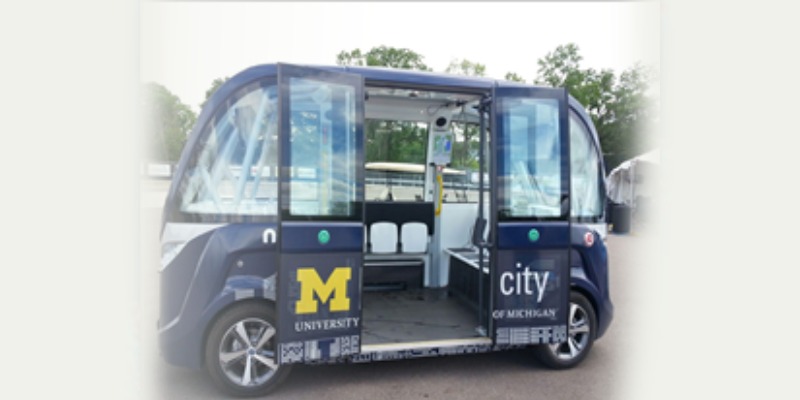Dear ASEI Members and Supporters,
During this unprecedented time, we want to make sure that you and your family are safe. Please follow the guidelines from appropriate Federal, State, and Local authorities. The effectiveness of Social Distancing is directly connected to full cooperation from everyone. We want to thank all the Healthcare professionals and the First Responders. They are doing everything possible to help anyone who is infected by the COVID-19.
For the safety of our ASEI members and supporters, we have decided not to hold any face-to-face meetings until further notice. We will leverage webinars and other online connectivity options to serve our membership.
Please visit our website www.aseiusa.org for the latest updates and announcements.
Stay Home. Stay Safe. Save Lives.
Best regards,
Jwalant Lakhia, Bhavesh Joshi, Rakesh Patel, and Ashok Madan on behalf of the ASEI National Board

Reinvigorating Nasa’s Lunar Exploration Plans After The Pandemic
by Ajay P. Kothari – Monday, May 11, 2020
In a recent Washington Post op-ed, Josh Rogin argued for the need for a strong American response to China’s perceived mishandling of the coronavirus pandemic: “Americans in both parties increasingly agree that the United States needs a tougher, more realistic China strategy that depends less on the honesty and goodwill of the Chinese government.” Such a strategy should include space, too.
The response to the coronavirus will have long-term impacts on NASA. With trillions of dollars spent so far, budget cuts for all agencies can be expected in the next fiscal year and beyond. NASA will be among the agencies affected more adversely than others, given they are not considered to be essential. Democratic lawmakers, but also many Republican ones, will oppose any increase sought for the agency. The Moon has, in this since, moved further away. How do we fix this problem?
Antagonism towards China by the public, and hence lawmakers, combined with the threat of budget cuts, points to a potential and necessary path. For NASA, it may likely not be budget cuts, but almost surely any budget increase will face the axe.
China’s activities in space are not just for economic or military superiority, though they may be a side effect, with even higher probability of that now. They are also doing it for civilizational pride, which morphs into national pride. It is very strong. The motivating factors in the near future will not be just financial. China’s pride has been hurt by the pandemic, so they will do the things to rejuvenate it. The Chinese feel that they were an exceptional civilization for a long time. They want that again and understandably so. It is nationalism, not communism. They need a face-saving mechanism badly and space is one of them. Space exploration for China, and other old civilizations like India, beckons of otherworldly qualities. It overlaps with science and the spirit of exploring. We need to understand that, and not try to reduce everything to economic numbers.
Despite these recent horrendous stumbles, they will have humans on the Moon in as little as five to seven years. And it will not be for any other reason than to start to “win” in space. They may well be the first to extract water from the Moon. It is not a space race as a military competition this time around, but will devolve into an egoistic and economic one—a “space race” nonetheless.
This is why going to the lunar surface, not the lunar Gateway, is very important for the United States. This time, of course, it’s not just to visit, or even just to stay. That is not enough. It is to do things there, and those high priority things to do are on the surface, not in orbit.
This also implies we not only will need to be there in large numbers but also quickly, in order to compete or to reach a favorable distribution. Those at the table write the rules. All of the above means we need a solution that can take thousands of tons, not hundreds, of infrastructure and other materials to the lunar surface.
NASA is doing the right thing by exploring options for the Human Landing Systems through contracts announced recently. While doing that, though, we need to also find ways to efficiently send needed infrastructure to the surface first, in some format that does not rely on the lunar Gateway to get the task done. It needs to be done over next few years, with the habitats and other infrastructure, including for in-situ resource utilization, awaiting the astronauts’ arrival.
This problem cannot be solved by just the Space Launch System. It is five to eight times more costly than the approaches I’ve discussed here previously (see “A giant leap for America”, The Space Review, November 20, 2017; and “How to make an urgent and affordable return to the Moon”, The Space Review, October 14, 2019), and is expected to have much less frequent launch capability. We will need five to ten launches a year of this type to take the requisite infrastructure and material to the lunar surface. Going to Mars using this method is also faster, and it can be done in four years. And later, using in-situ water ice from the lunar surface with gravity assist would be an attractive choice as well. The SLS program needs to be readdressed to design and produce the upper stages for different destinations using different (possibly methane and hydrogen) fuels and different payload sizes, along with other exploration concepts and hardware.
Just letting the space companies take over will also miss one important mark. For the public to feel the pride, as they did during Apollo, they have to feel that they did it, that we did it, that NASA largely did it. NASA needs to devise ways where businesses participate, but where the public feels proud and not just the owners of those companies.
While continuing science, NASA should do those things now that speak towards this potential competition with China in the human exploration arena. It may be or surely will be a space race, a competition for lunar resources, including water ice, that we do not wish China to get a controlling interest in. Lawmakers will be in mood to listen to that, rather than spend billions for relatively more cosmetic endeavors like the lunar Gateway. If we concentrate on the lunar Gateway, we will miss the bus and then it will be too late: another easy win for China. We cannot allow that.
NASA should postpone the lunar Gateway for now, concentrate fully on getting to the lunar surface anyway we can—not that it has to be SLS or bust, especially now that its first launch has again slipped to mid to late 2021. We can get to the surface using reusable boosters like Falcon Heavy, New Glenn, or Starship, at a fifth the cost of SLS, as well as be quicker and scalable. It will require some modifications, some prodding, and some out-of-the-box thinking that I am sure NASA’s Human Exploration and Operations Mission Directorate can do under the new leadership it has now. Congress will like it too—surely with grumblings from some, although others will secretly and not-so-secretly applaud it. I believe the Trump Administration will also be quite welcoming of it. The paradigm has shifted greatly in last few months. We can wait for several months to make these changes, but we absolutely cannot afford to wait for years.
NASA’s Plan for Sustained Lunar Exploration and Development released on April 3 is very well thought out, but I am afraid the lunar Gateway reliance would be hindering. It needs to be flipped, with trying to concentrate on it after five years instead of before. That we need to beat China and stay several steps ahead is now a much more convincing argument to Congress, and correctly so. NASA should utilize this mindset while the iron is hot. Asking Congress for billions for the Gateway is just not going to fly. Using the unnecessarily costlier SLS will also not be favorably rewarded. But competing strongly with China will be. Upsetting Boeing and Lockheed Martin is minor compared to the whole country being upset by China as has happened now, and may again in future.
Dr. Ajay Kothari is founder/president of Astrox Corporation. His MS and PhD in Aerospace Engineering are from the University of Maryland.

ASEI- 2020 National Board Nomination
Dear ASEI Members,
The National Board of ASEI needs to conduct its 2020 election to fill the Board of Directors open positions. Hence, the purpose of this communication is to request nominations from the membership or the ASEI National Board of Directors. There are two open positions that will be filled through this nomination process.
You can self-nominate or nominate someone else for the ASEI National Board position. If nominating someone else, please get concurrence from your nominee before submitting the nomination.
To be eligible to become a board member, the person must be an ASEI paid member in good standing for one year, actively participated in ASEI activities, and must have exhibited leadership qualities from experiences that would add significant value to the board. The nominee must be ready and willing to participate in all (or almost all) board meetings and contribute by participating in ASEI activities including membership of various committees of ASEI.
Please check your email communication to submit your nomination. The deadline to submit nominations is December 6th, 2019. If you have not received our communication then please email [email protected].
Sincerely,
Ashok Madan
Secretary, ASEI National Board
Chairman, 2020 ASEI National Board Election Committee

ASEI National Board Nomination/election For The 2019
Dear ASEI Members;
The National Board of ASEI needs to conduct its 2019 election to fill the Board of Directors. Hence, the purpose of this communication is to request nominations from the membership or the ASEI National Board of Directors.
You can self-nominate or nominate someone else for the Board position. If nominating someone else, please get concurrence from your nominee before submitting the nomination.
To be eligible to become a board member, the person must be an ASEI paid member in good standing for one year, actively participated in ASEI activities, or must have exhibited leadership qualities from experiences that would add significant value to the board. The nominee must be ready and willing to participate in all (or almost all) board meetings and contribute by participating in ASEI activities including membership of various action committees of ASEI.
Please click the following link to submit your nomination:
http://www.123formbuilder.com/form-3198459/asei-national-board-nomination-2019

Google Cloud Is The Next Big Thing!!!
When you want to search for something, your instincts take you to the Google search bar on your browser but did you know Google is amongst the top-three cloud providers in the world? Building on its technical chops that made its search engine ubiquitous, it has been offering cloud services for the past 10 years. Google had carved out a niche for itself, working with startups and smaller companies in its early days. However, it’s now a serious contender for enterprise clientele, with a big data and machine learning background to bolster its product catalog.
At their flagship conference in San Francisco Google Cloud Next18 that spanned last week (July 24-26th 2018), Google proudly showcased its new tools, technologies customer successes, spotlights, new partnerships, and more to build out its ecosystem. Google has long seen success in its AI and machine learning efforts, and now it is fully realizing their potential among enterprise customers and developers. The company’s 100+ announcements at the conference touched on three key themes: Artificial intelligence (AI), developers, and unified cloud.
ASEI Silicon Valley President Piyush Malik, who serves in key leadership role at a silicon valley headquartered startup SpringML, participated in the conference and shared his thoughts with the attendees. SpringML is a rapidly growing Premier partner to Google Cloud for Machine Learning and Data Analytics. His talk was based on their offerings in the domain of Predictive maintenance using Google Cloud IOT and Machine Learning and successful implementations at clients. While painting a picture of need for maintenance of industrial assets and machines of all kinds across industries, using research and studies from industry bodies and leading analysts, he proved how maintaining equipment based on predictive algorithms is better than time based approach hitherto followed in preventive maintenance. Using the concept of “remaining usable life” (RUL) of sensor enabled components of heavy equipment, most of which are interconnected in today’s world of IOT, he demonstrated that applying machine learning techniques and algorithms can lead to savings and productivity gains. The SpringML demo combined with client testimonial from Mike Branch, VP of Analytics at Geotab delivered a very powerful message home.. very true to the theme of the conference “ Made Here Together”
Overall, Google Cloud Next ‘18 was an incredible experience! From fantastic keynotes and fireside chats to GO-JEK CTO Ajey Gore appearing on-stage on a scooter to listening to Target CIO Mike McNamara over 25000 attendees had an inspiring, educational and entertaining week at this conference. There were more than 290 customer speakers sharing their stories of business transformation in the cloud and taking part in hundreds of breakout sessions.Here are some of the glimpses.

Stem Picks Up Steam Via IBM & ASEI Silicon Valley
STEM is essential to Innovation and competitiveness and American Society of Engineers of Indian Origin is firmly committed to this objective. ASEI has been engaged in community giveback since its inception in 1983 and the Silicon Valley chapter was formed in 2015 to focus on skill building in STEM and innovation On Feb 2nd, 2016 driven by IBM On Demand Community Volunteers, ASEI helped organize a Job Shadowing Day at IBM North San Jose Campus. Around 50 High Schoolers from Alameda were invited to visit and interact with technical staff, researchers and executives from various parts of IBM. They presented a series of tech talks covering latest trends and accomplishments in cloud, data, mobile, Internet of Things, Cognitive as well as basic sciences like chemistry and physics and also hands on activities in design thinking for students as part of Job shadowing day activities sponsored by IBM site executives and local IBM Academy of Technology Affiliate. That day, ASEI Silicon valley also sponsored an essay contest for these attendee students and the best 3 reports were awarded certificates and prizes
Here is a summary video from the event. https://www.youtube.com/watch?time_continue=194&v=kqT7H6-kab4
Feel free to share and be in touch if you would like to get involved in ASEI community giveback activities. Stay tuned for more!
https://www.linkedin.com/pulse/community-giveback-stem-focus-asei-silicon-valley-asei-silicon-valley

Deadline Extended For The Submission Of Abstracts
We would be pleased and honored if you would consent to be a speaker in one of the above technical tracks. Please visit our convention website at http://aseiseattle.org/ technical-program/ to get more details about the above technical tracks. You can also submit your abstract at this website. The deadline to submit your abstract is July 15 th 2018.

University Of Michigan Gets Driver Less Vehicles!!!
Two autonomous vehicles have been introduced in the University of Michigan, Ann Arbor. They are now ready to pick up the students from the North campus Research complex. Researchers do believe that these vehicles can have the potential for an accident-free future.
Click the link below to know more,
https://www.wxyz.com/news/region/washtenaw-county/driverless-shuttles-introduced-at-university-of-michigan

Call For Speakers !!!!
We would be pleased and honored if you would consent to be a speaker in one of the above technical tracks. Please visit our convention website at http://aseiseattle.org/ technical-program/ to get more details about the above technical tracks. You can also submit your abstract at this website. The deadline to submit your abstract is June 22nd, 2018.

Call For Speakers!!!
You are invited to be a technical speaker for 33rd ASEI National Convention Inspiring Future Engineers, focusing on the STEM and how engineering can change the world! Please click for more detail and to submit your application by June 15th, 2018.
http://aseiseattle.org/technical-program/


